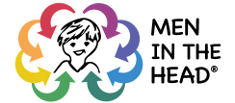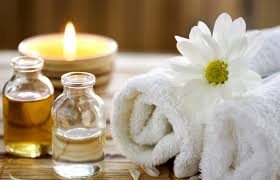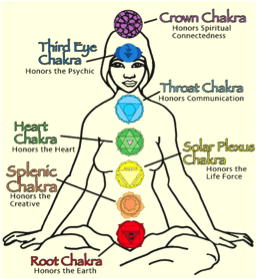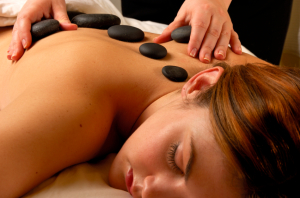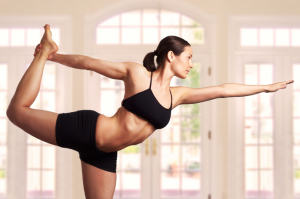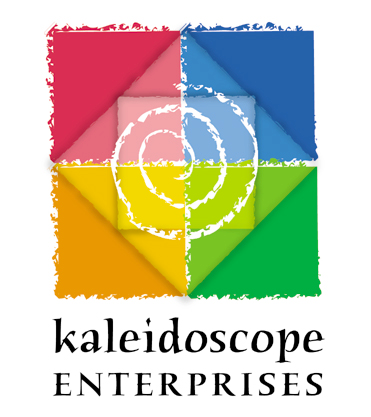Snapshot: Complementary Therapies
As we have been discussing various therapies over the past months, I wanted to outline some of the most popular ones for you. Here is a snapshot of the most popular complementary therapies in alphabetical order.
Acupuncture – Needles are placed into the skin along meridians and other particular points on your body. The needles are SMALL and with a good practitioner, they are not nearly as invasive as you may think. There is also the added benefit of the ‘acupuncture buzz’ that you get while you are being treated. Acupuncture treats allergies, anxiety, indigestion, infertility, pain management, sleep disorders and many other maladies.
Ayurveda – Ayurveda combines the Sanskrit words ayur (life) and veda (science or knowledge) and is a complete medical belief and philosophy that was developed in India (5000+ years ago). The basic tenets involve the universal interconnectedness (among people, their health, and the universe), the body’s constitution (prakriti), and life forces (dosha), which are often compared to the biologic humors of the ancient Greek system. Using these concepts, Ayurvedic physicians prescribe individualized treatments, including compounds of herbs or proprietary ingredients, and diet, exercise, and lifestyle recommendations.
Chakra Balancing – Either through meditation or hands-on healing, the 7 major energy points along your body, known as chakras, are diagnosed and balanced. Chakras involve:
Chiropractic: Network – This type of chiropractic healing involves a group healing room with many tables where you lie down fully clothed and the practitioner assesses your spinal health and energy and clears it through gentle touch release and the use of breath. The combination of touch, breath and the group energy offers a release and support that could not be found in a one-on-one setting.
Chiropractic: Traditional – According to the American Chiropractic Association, “Chiropractic is a health care profession that focuses on disorders of the musculoskeletal system and the nervous system, and the effects of these disorders on general health. Chiropractic care is used most often to treat neuromusculoskeletal complaints, including but not limited to back pain, neck pain, pain in the joints of the arms or legs, and headaches.”
Chiropractors practice a drug-free, hands-on approach to health care that includes patient examination, diagnosis and treatment. Chiropractors have broad diagnostic skills and are also trained to recommend therapeutic and rehabilitative exercises, as well as to provide nutritional, dietary and lifestyle counseling.
Cranial Sacral Therapy involves gentle manipulation of the bones of the skull. The approach targets alignment and balance of the craniosacral system. Some common problems that are treated with craniosacral therapy include chronic pain, chronic headaches, scoliosis, whiplash, or muscle tension.
Crystal Therapy is a technique that employs stones and crystals as healing tools. A practitioner places crystals on different parts of the body to use the energy from the crystals or stones to help heal the body.
Energy Clearing: Hands-On – involves clearing of energy blockages from the body through the hands.
Energy Clearing: Remote – involves performing an energy clearing and releasing ritual in a remote setting.
Essential Oils – Essential oilscan be categorized as aromatherapy, but they deserve their own category as they can be used in massage, diffused into the air, used in a bath or in some rare cases, ingested. There are many essential oil companies and some of the most pure are Amrita, Floracopeia, Mountain Rose Herbs and Young Living.
Flower Essences – The founder of flower essence therapy was an English surgeon named Edward Bach. Dr Bach was a pioneer in understanding the connection of our emotional bodies to our physical health. The 38 original flower remedies, known as Bach flowers, were used to treat the underlying emotional causes of diseases. Flower essence therapy is very gentle and can typically be combined with other therapies. There are many more flower essences today including those from the Delta Gardens, Flower Essence Society (FES), Perelandra, and many more.
There are many types of massage therapy. The most common (in alphabetical order):
Aromatherapy is a massage with scented essential oils to ease particular conditions such as: stress, anxiety, depression or headache relief.
Chair Massage:This type of a massage allows the client to remain fully clothed and rest in a comfortable sitting position. While seated the therapist can work the head, neck, arms, hands, back and legs quite effectively.
Deep Tissue targets deep muscle & connective tissue. This type of massage goes beyond the surface of the skin and underlying soft tissue to deep areas of the muscle.
Hot Stone involves heated stones to help release tension & tightness in the muscles. This type of massage relaxes, rejuvenates, soothes, opens up tight muscles, removes toxins, tones and balances the body.
Shiatsu:Shiatsu means “finger pressure”. Similar to acupressure, this technique incorporates the pressure of fingers, palms, elbows, knees and feet to unblock the flow of life energy at specific acupuncture points. Shiatsu recognizes the Yin (negative) and the Yang (positive) as the two energy forces and the Five Elements as governing through the energy meridians to vital organs.
Sports Massage is used as a preventive medicine for many athletes before, during and after sporting events. It is used to keep the muscles loosened and warmed up to reduce injuries, or after a hard workout to rid the body of stress, relieve fatigue and remove toxins as a result of the strenuous activity.
Swedish: This is the most popular massage technique that combines several techniques including kneading, rolling, friction, percussive and taping strokes to aid in stress and tension reduction, improve circulation and blood flow, remove toxic wastes, and tone muscles. All basics strokes flow toward the heart while circulation increases without increasing pulse rate.
Thai:Based on Ayurveda and Yoga, Thai massage originated in India and is believed to be over 2500 years old. This technique involves the hands, knees, legs and feet to place the receiver into yoga like positions and stretches. This allows external body stimulation to produce internal effects within the body. Benefits include relaxation, increased energy, increased flexibility, greater range of motion and increased circulation.
Myofascial Release:John F. Barnes P.T. , the authority on Myofascial Release, is considered to be a visionary and teacher of the highest caliber. This type of therapy treats the fascial system using gentle pressure application where fascial restrictions are found on the body. This therapy is used to treat trauma, restriction of motion or inflamed pressure that influence a fascial damaged area and produces pain and discomfort that might be found in back pain, fibromyalgia, TMJ, restricted motion, spasm and much more.
Polarity:The theory behind this approach is based on every cell in the body having a positive and negative pole. This therapy can be performed with the client fully clothed or as a complementing treatment in combination with other modalities, such as massage. Some conditions treated with polarity therapy include arthritis, asthma, chronic fatigue, fibromyalgia, stress, PMS, depression and others.
Qi Gong – is a practice of aligning movement, breath, and awareness for exercise, healing, and meditation.
Reflexology – can be used on feet, hands or ears. The theory is that specific areas on the feet, hands and ears correspond to certain parts of the body, internal glands and organs included. Pressure applied in certain areas send signals to the corresponding location, gland or organ through the nervous system helping to provide balance to the desired area. Stimulating these areas can be used to reduce pain, ease addiction, relieve stress and tension, and improve nerve or blood circulation.
Reiki – Reiki is a Japanese technique for stress reduction and relaxation that promotes healing. The practitioner channels energy through his or hands to promote healing within the body.
Sound Therapy – Sound healing is based on the concept that when a body part or organ is healthy, it vibrates at a frequency that is in harmony with the rest of the body. When the vibration of the body part or organ is not in harmony, illness or disease is the result. Sound therapy creates vibrations for your body to harmonize. This technique can involve singing bowls, chimes or tuning forks.
Tai Chi – a Chinese martial art and form of stylized, meditative exercise, characterized by methodically slow circular and stretching movements and positions of bodily balance.
Yoga
Here’s a quick introduction to some of the most common and popular types of yoga:
Ashtanga Yoga – Commonly called ‘Power’ yoga, Ashtanga is definitely physically demanding. It’s probably best suited for an ex-athlete or someone looking to really push their body.
Bikram Yoga – Otherwise known as ‘Hot’ yoga, this practice takes place in 105 degree heat and in 40% humidity. Bikram only has 26 poses and there’s lots of alignment work.
Hatha Yoga– This type of yoga is very relaxing, involving slow and gentle movements.
Kripalu Yoga – This type of yoga combines the breath with postures and is based largely on Hatha Yoga.
Kundalini Yoga– “Kundalini” refers to the energy of the root chakra which surrounds the area around your lower spine. Everything is done to the #33 and involves a great deal of chanting.
Restorative Yoga– Restorative yoga is focused on relaxation.
Vinyasa Yoga – Commonly called “Vinyasa flow” or just “flow”, you’ll definitely be moving, flowing from one pose to the next. Other than starting with a sun salutation, no two classes will be alike. It’s the most popular style of yoga in America.
